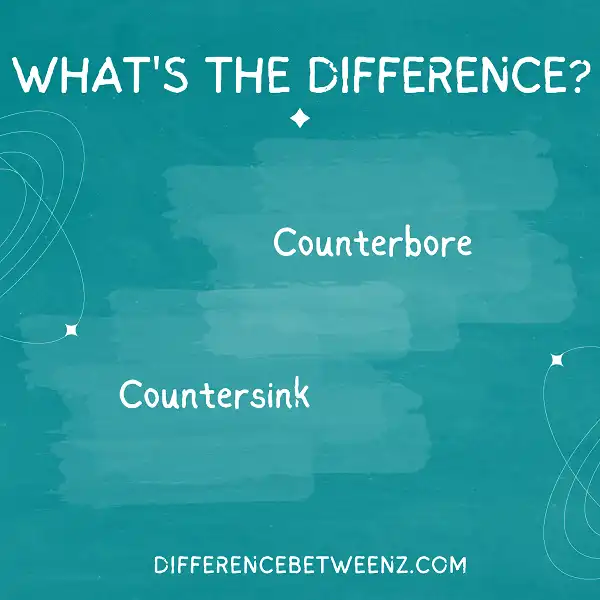Counterbore and countersink drills can look very similar, but they are used to create different effects in holemaking. Whether you’re working on a large industrial project or a simple DIY task, knowing the difference between counterboring and countersinking is important if you want the finished product to look professional. In this blog post, we’ll explain how these two operations are done and explore when each fitting would be most appropriate for your project needs. Read on to find out essential information about drilling, so you can make sure that your holes come out looking great!
What is Counterbore?
- The counterbore is a type of machining operation that focuses on producing a flat-bottomed hole in a workpiece. Counterbores are typically used for mounting screws and other threaded objects during manufacturing or assembly.
- Counterboring involves drilling or boring out the surface of an existing hole from its CenterPoint to a larger diameter, thus creating room for threading and fastening purposes.
- Counterboring is often conducted with either manual or automated machines and can require precision to accurately determine the dimensional requirements before beginning the operation. Counterboring is an integral part of many manufacturing processes and results in an improved overall quality of the end product.
What is Countersink?
Countersink holes are one of the most important drill types used in manufacturing and carpentry. Countersinks are used to create a cone-shaped surface around a drilled hole so that screws, nuts, and bolts can fit flush with the material they are being fastened to. Countersink drills use the same motion as traditional drilling but with an added cutting action that bevels out an indentation as it drills deeper into a material. When properly used, Countersink holes create much stronger connections than fastenings with standard drilled holes. Countersink drills come in a variety of shapes and sizes to fit any number of materials and projects that require secure connections.
Difference between Counterbore and Countersink
Counterbore and Countersink are two different types of machining processes.
- Counterboring is a process of enlarging the top of a hole, often to accommodate a fastener such as a socket head capscrew or larger round head screw.
- It is also used when another part needs to fit in the same bore or when the threaded portion is not long enough to protrude through an assembly. Counterboring uses an end mill that has a perpendicular shank on the cutting tool side and thus creates a flat-bottomed counterbore.
- On the other hand, Counter Sinking is generally used to create pockets in materials such as sheet metal where boltheads can be recessed for cosmetic purposes.
- Counter Sinking differs from Counterboring as it produces a conical-shaped hole that allows for bolt heads and nuts to fit flush into surfaces on assembly parts and/or components allowing for seamless assemblies between parts.
Counter sinking requires a specialized tool known as Countersink Cutter which has tapered cutting edges with conical angles at the nose allowing them to easily dive into any medium with tapered holes like countersinks, chamfers, or angle cuts.
Conclusion
A counterbore is a cylindrical flat-bottomed hole that enlarges another preexisting hole, and it is typically used so that a cap screw can be inserted and sit flush with or below the level of a workpiece’s surface. In contrast, a countersink is an angled conical hole whose diameter enlarges as it penetrates deeper into a workpiece; this feature enables washers or other types of fasteners to securely fit within it. Although both tools are designed to enlarge existing holes, they serve different purposes and create distinct outcomes. With this information in mind, you can now select the appropriate tool for your next machining project!


